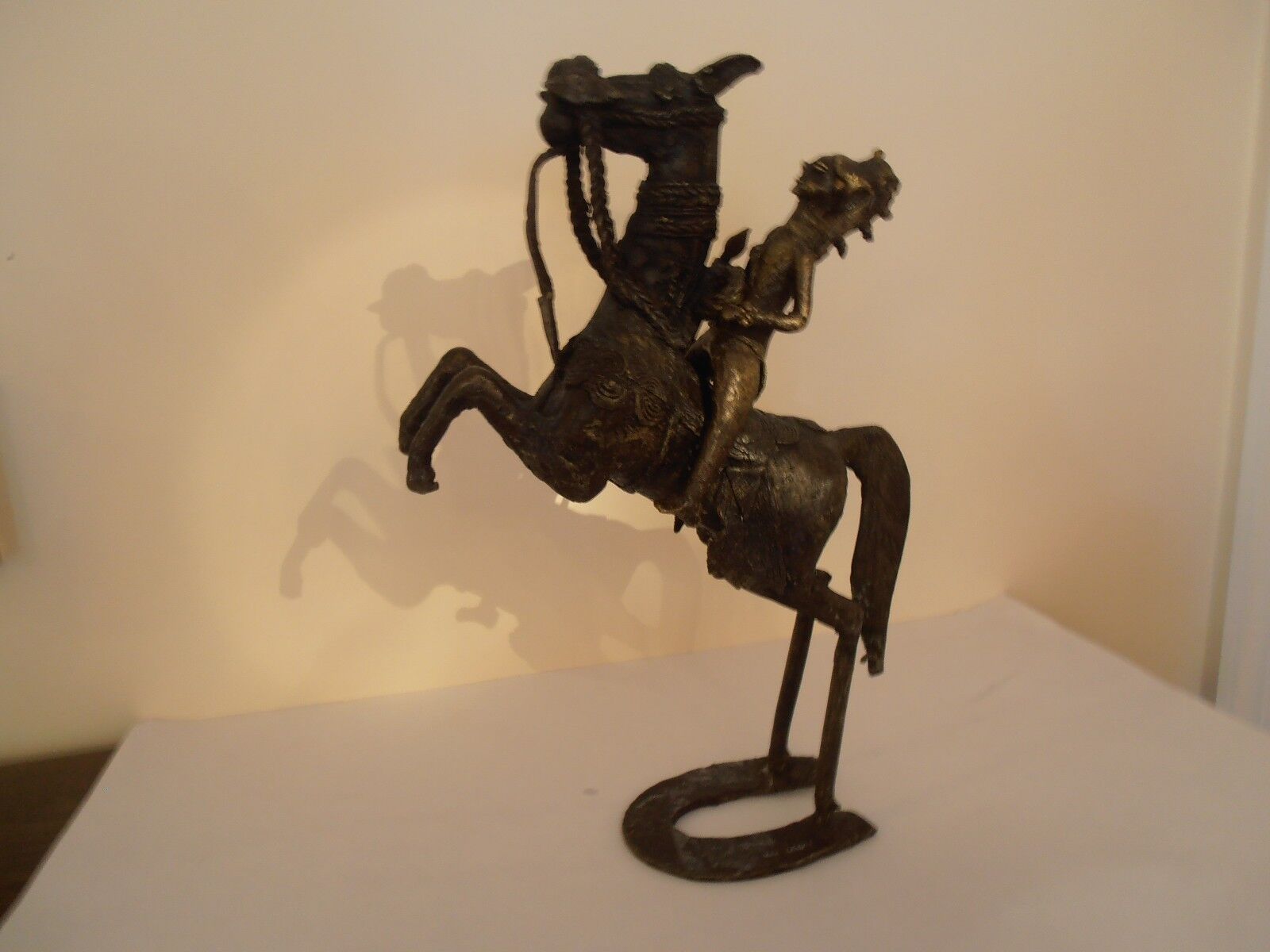VERY RARE AFRICAN TRIBAL ANTIQUE BENIN CAST BRONZE HORSE RIDER FIGURE

When you click on links to various merchants on this site and make a purchase, this can result in this site earning a commission. Affiliate programs and affiliations include, but are not limited to, the eBay Partner Network.
VERY RARE AFRICAN TRIBAL ANTIQUE BENIN CAST BRONZE HORSE RIDER FIGURE:
$1399.00
AFRICAN TRIBAL ANTIQUE BENIN CAST BRONZEHORSE RIDERFIGUREFrom private collection, estate.
14 inch\'s tall, about 10 inch\'s long, 3 1/3 inch\'s thick and weighs 6 pounds 4 ounces.
It was acquired by the current owner in the 1970\'s in West Africa and is known to be from Benin. Research has shown it is anauthentic Benin cast bronze figure.
This is an extraordinary well preserved Cast Bronze Horse Rider Figure.
The following was \"borrowed\" from a listing of a similar, although larger, near identical figure:
This extraordinary well preserved Bronze of the Benin Kingdom in what is now Nigeria exhibits a virtuosity and sophistication of style that has astonished the Western world since they were visited in the 15th century. Their work was brought to Europe following a punitive expedition by the British in 1897, causing a great sensation. The people of Benin, called Bini, are descendant from the Ife, also known for their remarkable Bronze. Almost all Benin art was created to honor the King or Oba and Queen Mothers.
The Benin Kingdom was strong through out the 15th and 16th Centuries and was located in West Africa bordering what is now Nigeria and Togo. Benin Clans were ruled by a King which was known as the Oba and who was the divine ruler of the Benin people. The people of Benin are called Bini and are descended from the Ife peoples. The making of these Benin bronzes were strictly considered court art and were made exclusively for the palace of the Oba and were designed to venerate the achievements and memories of the Obas and their Queens also called Iyobas or Queen Mothers who ruled through out the time of the kingdom. Themetal-smithswere very talented and used complex wax casting techniques which were far ahead of their time. Their work in bronze, copper and iron was extremely refined and their methods of metal smelting, forging and lost wax methods exceeded any seen in Europe until the 19th century. Lost-wax casting sometimes called by the French name of cire perdue (from the Latin cera perduta) is the process by which a brass or bronze sculpture is cast from an artist\'s carving usually made from wax. Very intricate works can be achieved with this method, depending on the carver\'s skills. Some of the finest examples of African art come from the Benin people and this is an extremely amazing specimen.
Back in the late 19th century when the British forces invaded Benin City, they were overwhelmed to find artistic sculptures cast in brass/bronze. They could not believe the technological sophistication and exquisite beauty and quality of these objects. What they saw was a total contradiction to what many westerners believed or assumed about Africa. The above was too much for the British forces to bear and they swiftly concocted excuses - \"The sculptures must have been made by the Portuguese, the Egyptians, or the lost tribes of Israel\"The so-called \"Portuguese, Egyptian or Israeli\" sculptures eventually found their way to Britain and later to other parts of Europe, where it was first classified Benin bronze sculpture.
VERY RARE AFRICAN TRIBAL ANTIQUE BENIN CAST BRONZE HORSE RIDER FIGURE:
$1399.00
